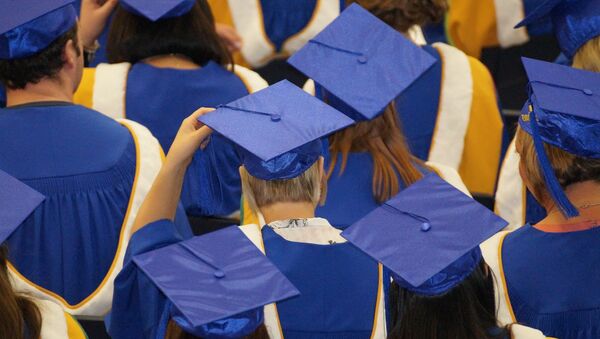The official UCAS end-of-admissions report for 2016, published December 12, indicates the number of students accepted from outside the EU fell by 2.3 percent to 38,300, the first fall since 2011. However, much of this fall is driven by a drop in applications by non-EU students – the number of EU students accepted to start their studies in September rose by 7 percent, with big increases from countries including Bulgaria and Poland.
International students? Pah!
— Scientists for EU (@Scientists4EU) December 12, 2016
Comin' over 'ere, giving us money, lifting our university results, forging global links for our UK students…
There was significant variation in application and acceptance rates from university to university, however – Cambridge University, which has the earliest applications deadline of any UK University, saw a 17 percent drop in EU applications. Nonetheless, these falls cannot be attributed to the June 23 'Brexit' referendum result, as the vast majority of applications came before the vote took place.
James Dobson, a researcher at think tank Bright Blue, told Sputnik the fall was a demonstration of the impact of the UK including international students in net migration targets.
"International students pay significantly higher tuition fees than their British counterparts and yield significant amounts of soft power to the UK government. Evidence shows the public do not want to see fewer foreign students studying at our Higher Education institution – the Government should remove students from the net migration target."
Not only financial — international students make a vital academic & cultural contribution to universities and the UK pic.twitter.com/XCqxLL1fTc
— Universities UK (@UniversitiesUK) December 12, 2016
Theresa May won't remove foreign students from net migration target. Regards it as "a fix".
— George Eaton (@georgeeaton) December 5, 2016
Elsewhere, the report also raises concerns about a slowdown in the rates of acceptance among poorer applicants. Although people from disadvantaged backgrounds are more likely to enter university than ever before, and the number of students from disadvantaged backgrounds entering higher education has reached record levels again this year, the gap in entry rates between rich and poor has widened for the first time ever.
The wealthiest fifth of 18-year-olds were 3.8 times more likely to get a place at university in 2016 than those from disadvantaged backgrounds. Rates of entry among the wealthiest increased 1.2 percent points from 2015, compared to a 0.1 percent increase among the poorest.
Sir Peter Lampl, chairman of the Education Endowment Foundation, said the 'access gap' between rich and poor remained "stubborn and persistently wide."
"It is of particular concern that the access gap is widening on UCAS new multiple equality measure as the proportion of young people going on to university from the top fifth is increasing at a much faster rate than those from the bottom fifth. Among this group, the top fifth are ten times as likely to go to the more selective universities than those in the bottom fifth. Today’s figures tell us that we need renewed and concerted efforts from government, schools and universities to improve participation rates for less advantaged students."




